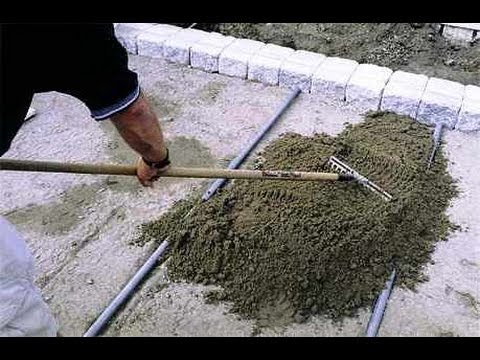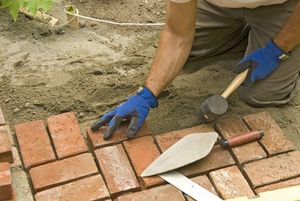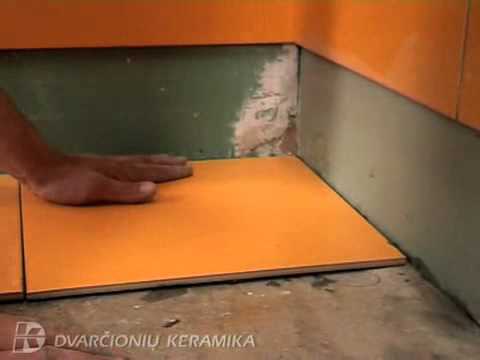How to make a paving slab?

Watch the video


In the suburban area you need to lay outpath, but you do not know how and from which to make the tile. Use our recommendations and step-by-step instructions, and you can easily make a tile yourself.
During the manufacture of tiles you will need:
- Molds for casting slabs;
- Cement M500;
- River sand;
- Water;
- Dyes;
- Pieces of steel or wire;
- Grease for molds.
Form preparation
During the creation of paving slabs most oftenuse plastic or silicone molds, since they are easy to use. These forms can be purchased at garden tools stores and their choice is quite wide. And in order to quickly make the right number of plates, buy several pieces at once. Having chosen the necessary forms, we grease them with a special lubricant, which prolongs the life of molds and makes the process of extraction of finished products less labor-intensive.
Solution manufacturing
- To prepare mortar, we connect cementM500, river sand and clean water, with a ratio of cement to sand 1/3. We add so much water that the solution is not liquid, but at the same time it was plastic.
- Typically, the solution is prepared with a concrete mixer, but it is possible

- If you want to make a paving slabcolored, it is necessary to add a colorant of a suitable color to the solution. To do this, dilute the dye in a glass jar and mix thoroughly to avoid the formation of lumps and sediment. If you have diluted the dye poorly, it will not give the tile the color you need. Please note that you should not save expensive dye, as the tile will lose its original color after a while. And in order to save the coloring material, it is better to use a two-layer technology for pouring tiles: first, the bottom layer is poured, then the upper pigmented layer. It must be remembered that between the filling of the first and second layers should not take more than twenty minutes. Two-layer tiles are not only more economical in production, but also more durable than conventional ones.
Remember that the percentage of the dye should be 2% of all components in dry form.
Production of paving slabs
When all the preparatory work is completed, you can begin to fill in the forms:
- Fill the mold halfway, then lay the reinforcement (metal mesh, thick wire) and fill the mold for the paving slab with the whole solution.
- We level the solution with a wide spatula.
- To ensure that the cement mass is compacted andthe air came out, we tap on the walls of the mold with a solution with a small rubber hammer. This contributes to better strength and a smoother surface of the paving slab.
- After all the forms have been filled, we place them far from

- Tiles are removed from the molds 2-3 days aftercastings. But since this is quite a short time, we remove the tile very carefully: turn the shape on a soft surface, bend the sides of the mold from the tiles and slightly shake. When doing this work, the tile should be well separated.
- The freed forms can be used again by re-doing all the steps described above.
- We put the finished paving slab in the shade for final drying.
- We use tiles for flooring and walking only after 2-3 weeks. A complete drying of the tiles occurs somewhere in 27-30 days.
Some useful tips:
- Do not use cheap lubricant during the manufacture of paving slabs, which will allow the use of molds for a long time.

- Before each filling, the forms must be thoroughly washed and dried.
- If you have the opportunity, use a vibrating table, which will achieve a higher density of the solution.
- Add a plasticizer to the solution, which will make itmore elastic and resistant to frost. To do this, we dissolve the plasticizer, at the rate of 0.5% of all components in dry form, in hot water, mix well, so that no lumps and precipitate form and add small amounts into the solution.
Using our detailed instructions and helpfultips, you can make a paving slab your own way. If during the work you have any questions about how to make a paving slab, you can watch the video to clarify all the incomprehensible moments.









